Guide: Soft vs. Firm Running Shoes
While the focus of this guide is the softness of the shoes, we can't tell the whole story without mentioning shock absorption (the ability of the midsole to dampen the impact or absorb the impact forces, so that less stress is sent to the legs) and energy return (which tells us how good the midsole is at bouncing back or how responsive the ride is).

We’ve summarized 20+ hours of research, lab data analysis and scientific articles into this guide to offer a comprehensive insight into the importance of midsole firmness in running shoes.
The forces on your body will be different if you jump on a mattress compared to jumping on concrete. The deformation of the surface determines the force of the impact. This is why shoes with good shock absorption reduce the load on the body while running. Shoes that are too soft make legs use more muscle energy to create propulsion. There are 2 ways to avoid this: 1. Don’t go too soft, or 2. Find softer shoes that are responsive.
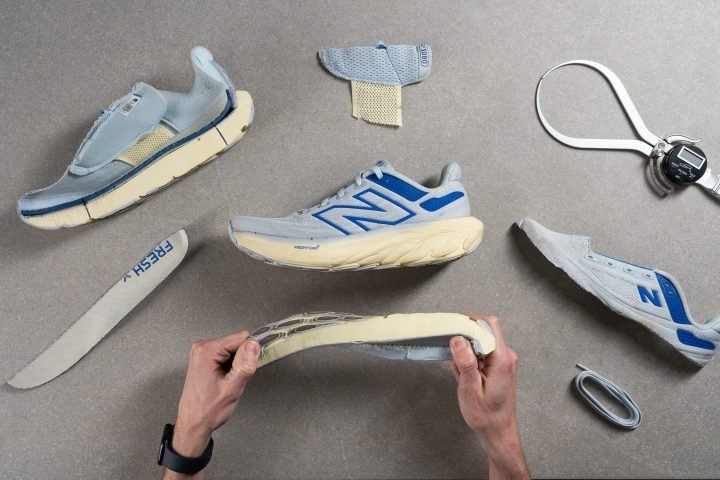
3 tips for buying soft running shoes
When shoes are soft, you usually have the “ahhh” moment when you put them on for the first time. This is why softness is highly related to perceived comfort.
However, if shoes were only soft, they would feel squishy and they would tire your leg muscles when running. This is when the spring or “pop” enters the scene: brands make the foams not only soft but also responsive. Finding a soft midsole that’s responsive (good energy return) and protective (good shock absorption) is a jackpot.
When buying soft running shoes, pay attention to:
- The energy return. The ride should be responsive and not dull. Otherwise, your legs will get tired sooner.
- The shock absorption. Softness won't do you any good if shock absorption is bad.
- Stability. Some soft shoes tend to work well only when running straight and completely fail at sharp turns or on uneven terrain.
Midsole softness: lab testing
Next to field-testing where we actually run in the shoes and describe how they feel, we also use a durometer to measure the softness of every midsole.
Using a durometer to measure midsole hardness in the lab:

A part of the field testing of New Balance FuelCell Rebel V2 (really soft, measured 6.5 on the durometer) vs. Brooks Ghost 14 (balanced, measured 20.5 on the durometer):
This means that at the bottom of every lab test, you can find the midsole softness of the shoe in question next to the average softness (both in the complete specs overview section). We do this test at room temperature.
3 softness levels of running shoes
Based on how soft the shoes feel, we categorize them into these 3 categories: firm, balanced, and plush running shoes.
| Cushioning | Features and purpose |
| Firm (hard) |
Often lower-stacked and aggressive looking, used for quick transitions. Greater midsole hardness results in shorter contact time (source). Much less shock absorption than in soft shoes. |
| Balanced |
Perfect balance between comfort and performance. Usually used in workhorse shoes (used for daily running, tempo runs, and racing). |
| Plush (soft) |
Plush shoes are usually high-stacked. |
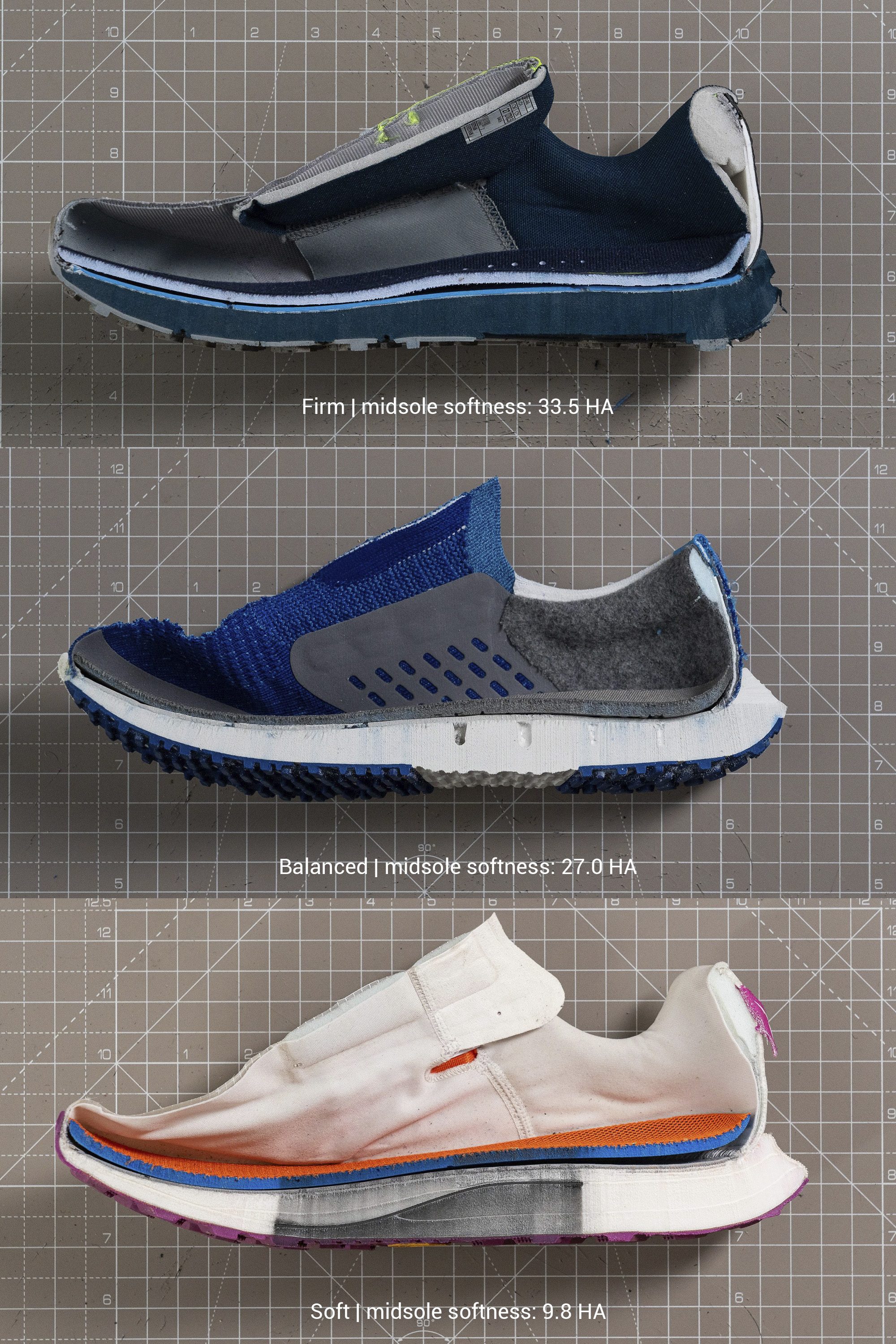
Shock absorption and energy return of soft shoes
These features are super important when you are into soft running shoes, because softness can also lead to bottoming out and having dull rides which ends up with premature foot fatigue and maybe even foot pain.
Shock absorption is the midsole's ability to absorb the impact forces at every landing. It does this so that your legs don't have to, or so that your legs are stressed significantly less. Energy return, on the other hand, is the midsole's ability to bounce back after it's been compressed. It tells us how much of the energy is returned and not spent on heat and deformation.
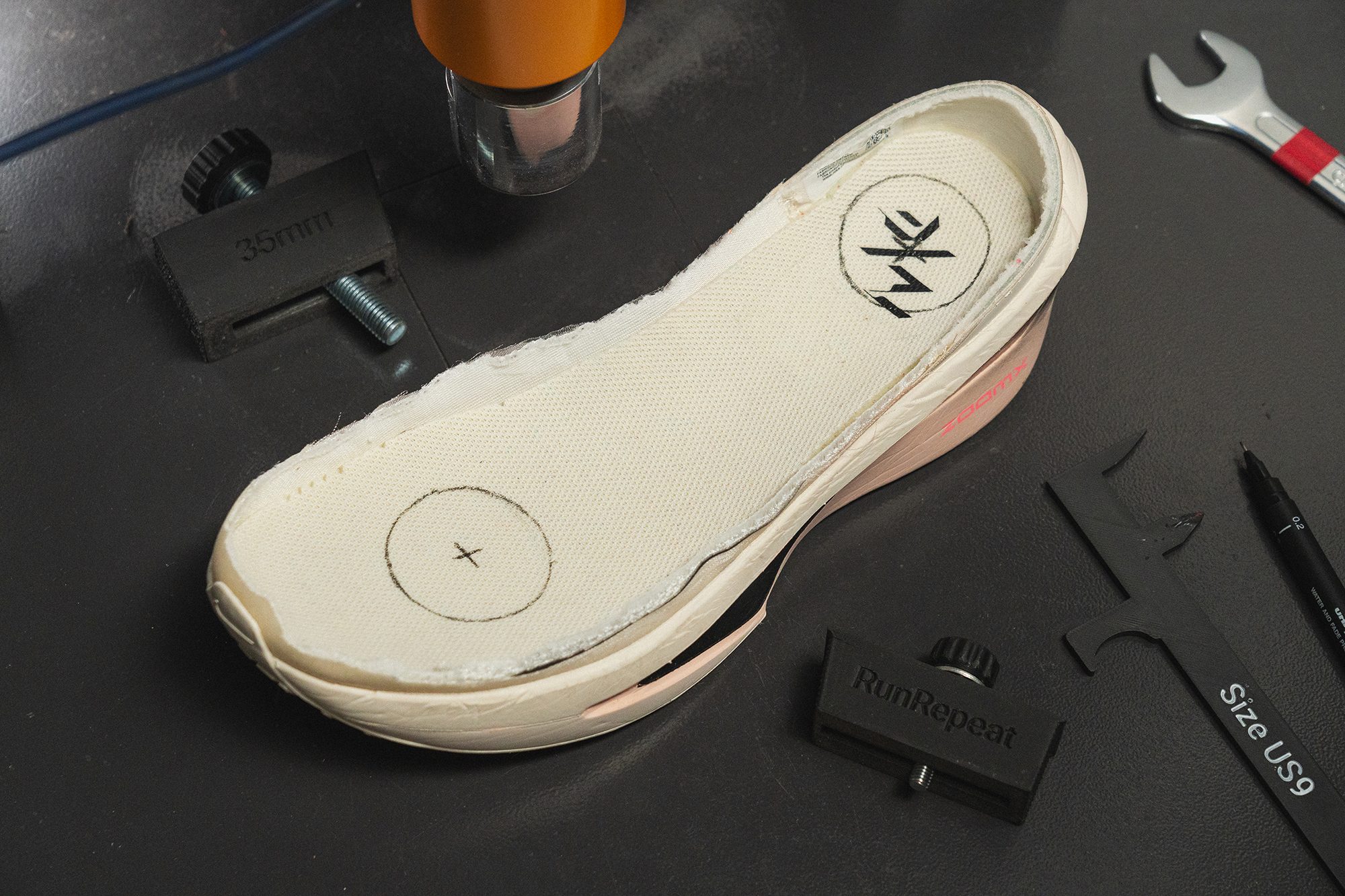
Running shoes with high shock absorption send less stress to the runners' joints and muscles. Running shoes with high energy return have a lively, propulsive ride.
Stability of soft shoes
Too soft and the midsole becomes unstable. This usually happens in foams without plates or in midsoles that are very narrow and very tall. To avoid this, you can look for a wider platform or plated running shoes.
Stability for overpronation or flat feet
90% of plush shoes are neutral as per our database. They are not a good choice for runners with moderate or severe overpronation. Make sure you get the support you need (it can be in the form of dual-density midsoles, stiff heel counter, reinforced midfoot area, guide rails, rollbar, medial post, etc.).
Here, we can see absolutely no stability features in the New Balance SC Elite v4 and, with the heel too soft, it’s just not a good choice for overpronators:
Stable and soft running shoes
When shoes are high-stacked and soft, they can be quite unstable. To avoid this, we recommend looking for a wider base.
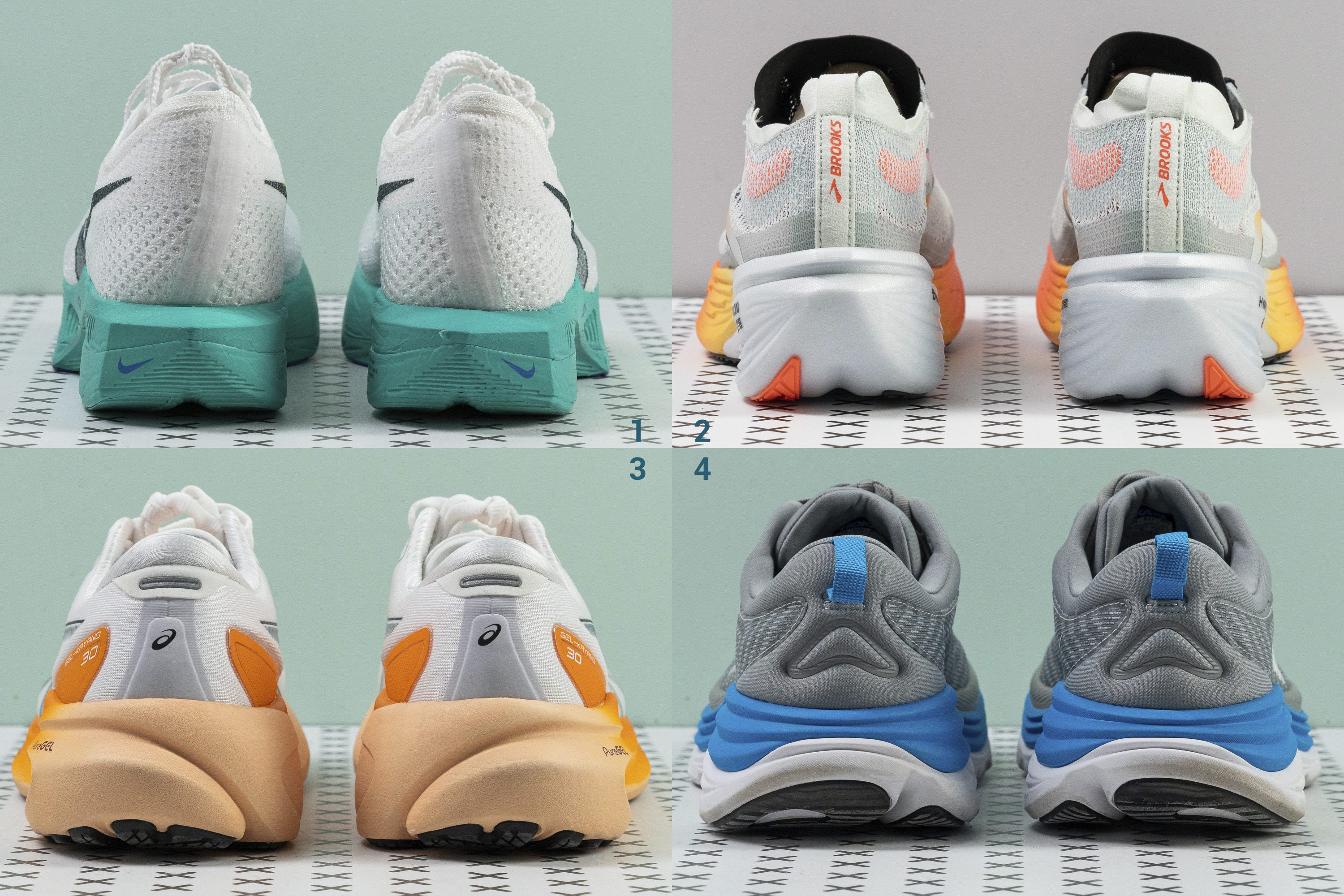
You can always consult our lab test results because we measure the width of the base in the lab. Below, you can see soft running shoes with the widest platforms:
Soft vs. cushioned vs. padded
When talking about soft (plush) shoes, it’s important to know they can but don’t have to be cushioned or padded.
It’s important to differentiate these terms:
- Padded: Shoes usually have noticeable padding placed on the tongue, heel collar, and overall upper.
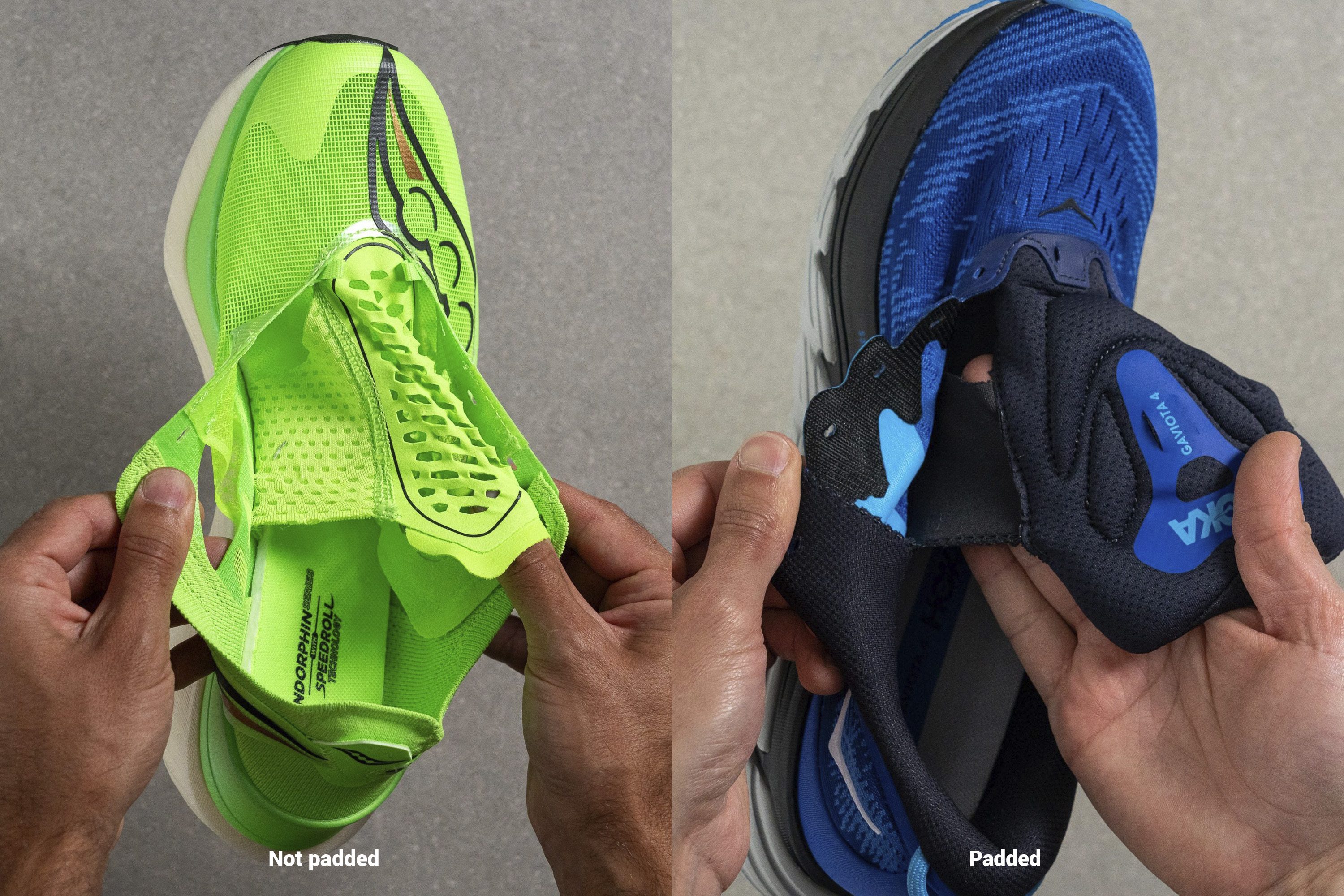
- Cushioned means that the midsole has good shock absorption and the shoe is usually high off the ground.
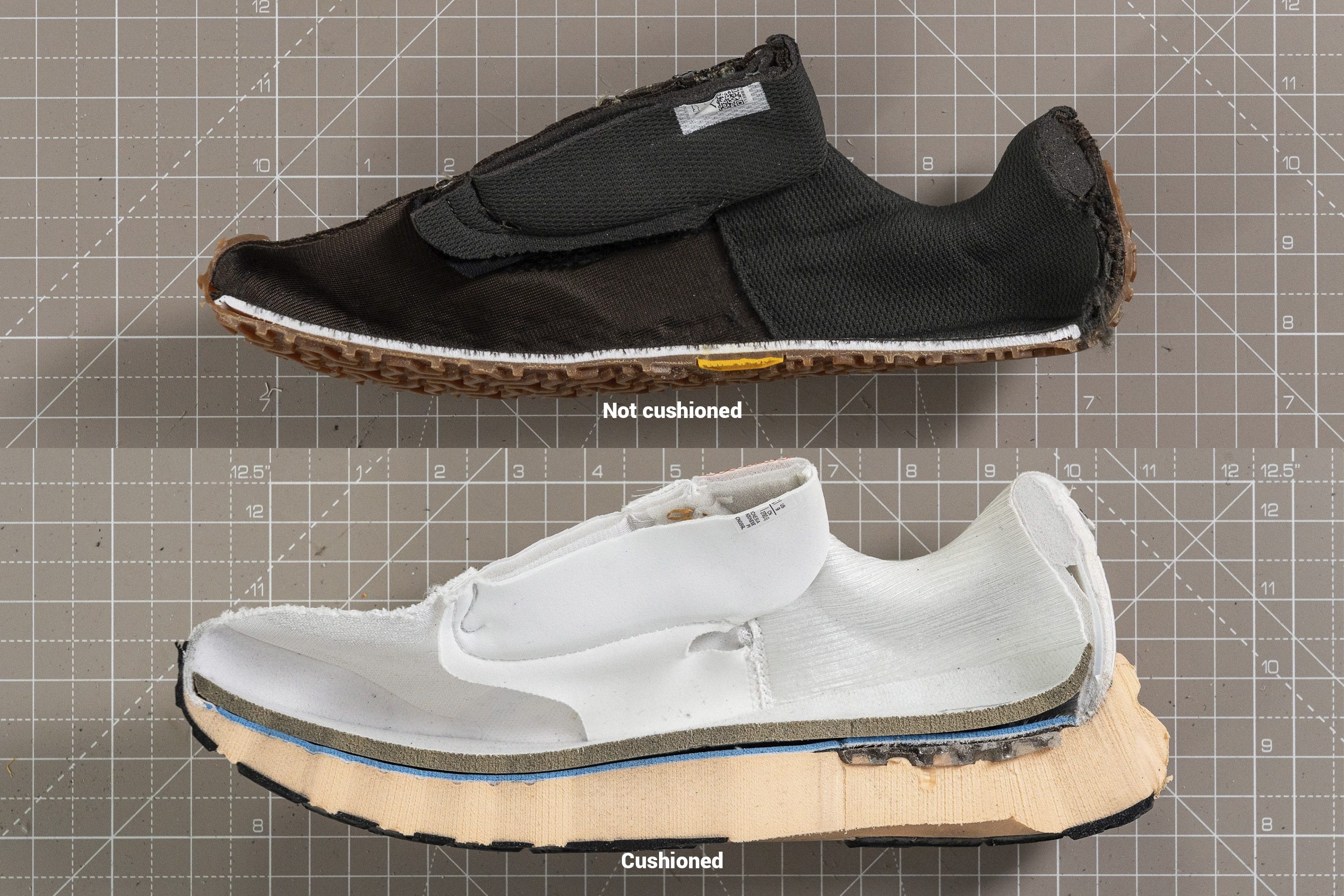
However, just because shoes are high-stacked doesn’t mean they have to be soft. These 2 values are not directly related.
- Soft: it means your feet can sink into the shoe, the midsole compresses when pressure is applied.
Injury risk in soft running shoes
Midsole hardness doesn’t influence running-related injury risk, as it was shown in a study that followed 247 runners for 5 months in hard (114 runners) and soft (134 runners) running shoes.
Another study involved 848 recreational runners and gave each participant a soft or a hard running shoe. They found that the injury risk was higher when running in hard running shoes, but it was noticed only in lighter runners.
Runners prefer a soft heel
These shoes have a soft or plush underfoot experience. That experience can be felt at the forefoot (under the toes), under the heel, or both. Given that 94% of runners are heel strikers, most shoes are focused on offering a cushioned experience in the heel area or throughout the whole midsole.
Self-perception of the forefoot and rearfoot cushioning (examined in this study on heel-striking runners):
- Runners prefer softer shoes.
- Cushioning under the heel mattered more in the perception of overall cushioning: soft-heel/firm-forefoot shoes were perceived as similar to soft shoes, while firm-heel/soft-forefoot shoes were perceived as medium shoes.
Softness changes with cold temperatures
In our guide on stiff and flexible running shoes we showed how dependent flexibility is on the temperature. That’s why we also repeat the durometer test after the shoe has spent 20 minutes in the freezer.
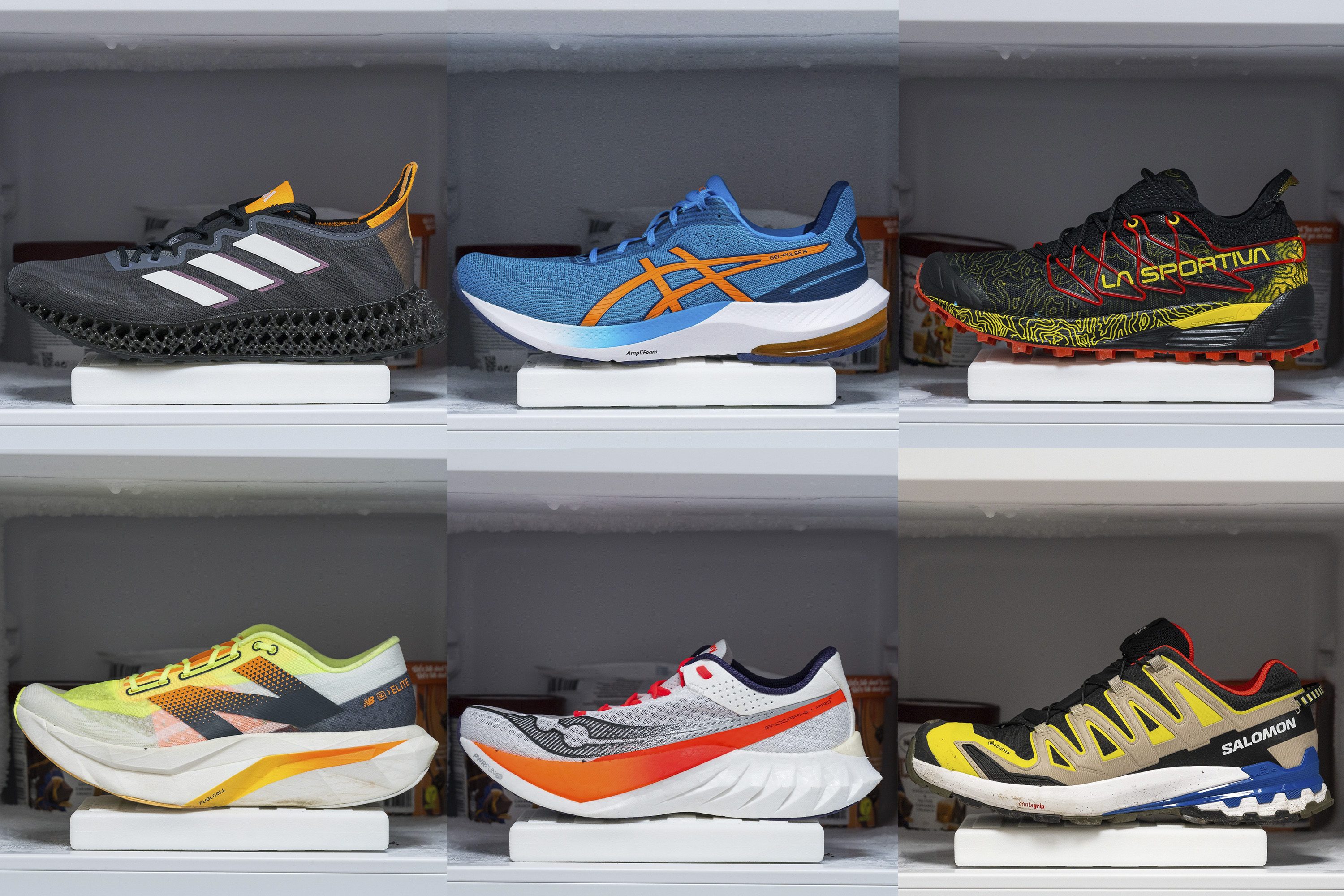
So far, our average room-vs-freezer change in durometer measurements has been 37.7%. The measurements range from 6.5 to 39. Higher numbers mean the shoe is firmer, while the lower numbers suggest the shoe is softer. This means that you should expect to lose at least some of the midsole softness when running on really cold days.
Shoes that firm up the LEAST in cold temperatures
Shoes that firm up the MOST in cold temperatures
Cushioning deterioration
Cushioning deteriorates with age: after 480km, a 16% to 33% reduction in the amount of cushioning was found in the heel region of the midsole (and heel-striking runners). However, runners weren’t able to perceive these changes even after 640km.
This tells us only that it deteriorates but not what happens with midsole softness levels. We’ve seen numerous reports of midsoles getting firmer with the mileage. Further tests are needed to determine that.
Midsole firmness does not really define a shoe's purpose
We’ve listed the 5 softest and hardest midsoles. The smaller the number, the softer the midsole (and higher numbers indicate that midsoles are firmer). It is evident that there’s no strict correlation between midsole hardness and shoe purpose (daily running, tempo runs, races). However, a much clearer correlation exists between midsole stiffness and shoe purpose as we’ve shown in our in-depth guide on shoe flexibility.
Insoles can help a LOT
Insoles aren’t there for the sake of.. Being there. They can add a layer of softness (literally and figuratively) and impact the shock absorption and energy return of the shoe.
They play an important role in shock absorption (as shown in this study): they can absorb up to 32% of impact energy under low impact energy conditions (walking and running). In our lab, we always note whether the insole is removable or not and how thick it is. At the moment of updating this guide, the average insole thickness in running shoes is 4.5 mm.

Signature foams ranked: softest to hardest
Shoe companies usually have their own signature foams. In terms of hardness, here’s how some of them ranked in our lab, going from the softest to the hardest. We can see that New Balance excels at softer midsoles and Saucony at firmer ones.
| Softest to hardest: signature foams ranked in the lab | |
| Foam | Midsole hardness (HA) |
| New Balance FuelCell | 6.5 |
| Nike ZoomX | 12.5 |
| New Balance FuelCell | 12.5 |
| Nike React | 14.5 |
| New Balance Fresh Foam | 14.5 |
| New Balance Fresh Foam | 16.0 |
| New Balance Fresh Foam | 17.5 |
| Nike ZoomX | 19.0 |
| Adidas Boost foam | 19.2 |
| ASICS FlyteFoam Blast | 19.2 |
| ASICS FlyteFoam Blast | 19.5 |
| Nike Air Zoom | 19.5 |
| Brooks BioMoGo DNA | 19.5 |
| Brooks BioMoGo DNA | 19.5 |
| PUMA Nitro Foam | 19.7 |
| Hoka EVA foam | 20.0 |
| ASICS FlyteFoam Blast | 20.5 |
| Brooks DNA Loft foam | 20.5 |
| Hoka Profly | 21.0 |
| Hoka EVA | 21.2 |
| Saucony PWRRUN | 21.5 |
| Hoka foam | 21.8 |
| Brooks EVA | 22.5 |
| Altra AltraEGO | 23.2 |
| ASICS Flytefoam Turbo | 23.2 |
| Brooks DNA Amp | 23.5 |
| ASICS FlyteFoam | 24.0 |
| Saucony PWRRUN PB | 25.3 |
| Saucony PWRRUN PB | 25.5 |
| Saucony PWRRUN PB | 25.5 |
| Saucony PWRRUN | 27.3 |
| Saucony PWRRUN | 27.9 |
| Saucony PWRRUN | 29.0 |
| Saucony EVA foam | 31.2 |
| Salomon Optivibe | 33.5 |
| On Helion foam | 37.2 |
| Brooks DNA Loft | 39.0 |
| Average softness: | 22.0 |
However, these should be taken with a grain of salt. Our tests have also shown that one type of foam doesn’t always score the same on our durometer tests. You can see this in the table as well, with many midsoles (DNA Loft, ZoomX or Fresh Foam) ranking differently on the softness scale.
As we’ve shown in the New Balance FuelCell Rebel v2 lab review, the same FuelCell foam scored 6.5HA on the durometer in the Rebel v2 and 12.5HA in the Elite v2. Foam looks similar in these shoes; the only known difference is Elite v2 (on the right) having a full-length carbon plate inserted into the midsole:
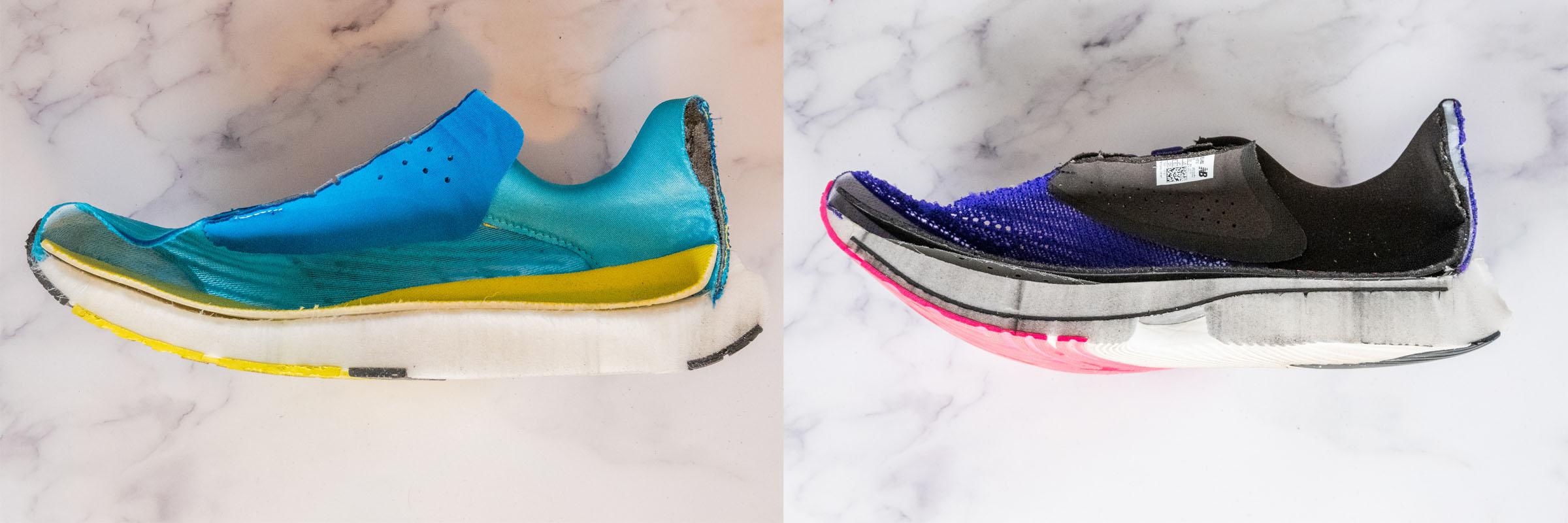
Caution when buying maximalist running shoes
Runners looking for that super soft feel tend to choose maximalist running shoes. While they usually deliver the softness, they also come with a few things worth paying attention to:
- They cause a higher rate of peak loading and impact forces which means the joints and tissues end up doing the job. This might increase the injury risk.
- Highly-cushioned maximalist shoes change the spring-like mechanics of running and amplify rather than attenuate impact loading.
- Runners in maximally cushioned running shoes didn’t have a different running economy than when they ran in neutral cushioning shoes.
- However, new technologies allow runners to improve their running times thanks to resilient foams and carbon plates.
High off the ground in ASICS Novablast 3:

Conclusion
It’s clear that softer shoes are better and more comfortable. However, remember not to overdo it: pay attention to the energy return and shock absorption as well.
While not intuitive, soft running shoes can be quite stiff. To make sure you know the difference, read our in-depth guide on stiff running shoes.
